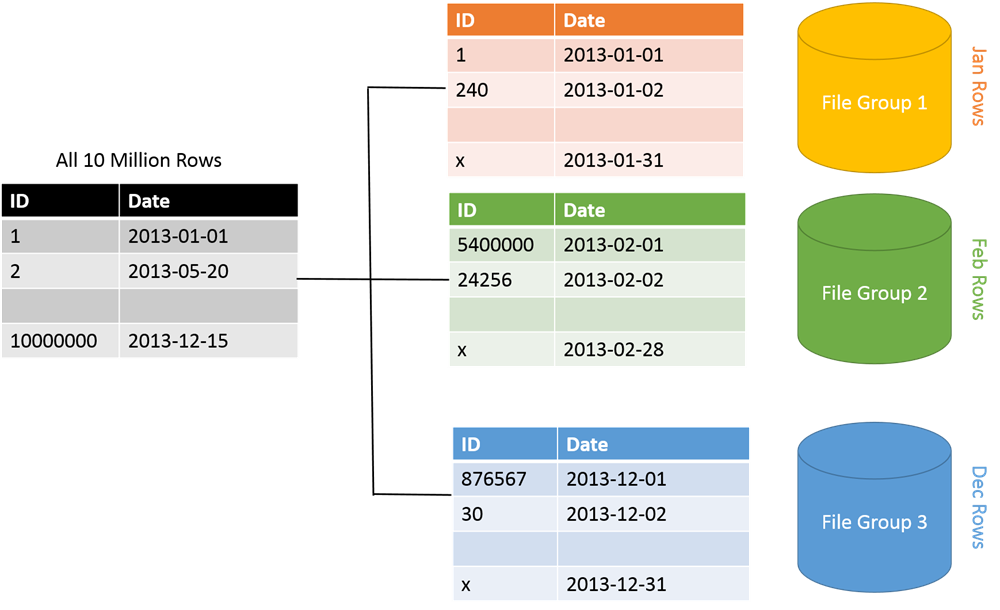In the world of data management, SQL Server stands out as a robust platform that offers extensive capabilities for handling large datasets. One of the most powerful features it provides is the ability to partition data, allowing for improved performance and efficiency when querying large tables. However, many users often wonder how to effectively use this feature, particularly when it comes to partitioning by multiple columns. Understanding this concept is crucial for database administrators and developers looking to optimize their SQL Server databases.
When dealing with large datasets, performance can become a significant concern. Partitioning tables can help mitigate this issue by dividing a table into smaller, more manageable pieces. Each of these pieces, or partitions, can be processed independently, which can greatly enhance performance during data retrieval. But how do you go about partitioning by multiple columns? This article will delve into this topic, providing you with a comprehensive understanding of the SQL Server partition by multiple columns feature.
As we explore the intricacies of partitioning in SQL Server, we will answer key questions that arise in the process. Whether you're a seasoned database professional or a newcomer to SQL Server, this guide aims to equip you with the knowledge necessary to leverage the power of partitioning effectively. So, let’s dive into the world of SQL Server and uncover the secrets of partitioning data by multiple columns.
What Is SQL Server Partitioning?
Partitioning in SQL Server refers to the process of dividing a large table into smaller, more manageable pieces while still treating it as a single table. This is particularly useful when dealing with large datasets that can slow down query performance. By splitting the table based on certain criteria, SQL Server can optimize data retrieval and improve overall performance.
Why Should You Use Partitioning in SQL Server?
There are several compelling reasons to utilize partitioning in SQL Server:
- Improved Performance: Queries on smaller partitions can be executed faster than on larger tables.
- Manageability: Smaller partitions are easier to maintain and manage, especially when dealing with large datasets.
- Maintenance Operations: Indexes can be rebuilt or reorganized on individual partitions, reducing downtime.
- Enhanced Parallel Processing: SQL Server can process multiple partitions simultaneously, further improving performance.
How Do You Partition By Multiple Columns in SQL Server?
Partitioning by multiple columns involves creating a partition function that defines how the data should be distributed across the partitions. Here’s a basic overview of the steps involved:
- Define a Partition Function: This specifies how the data will be split based on the specified columns.
- Create a Partition Scheme: This determines how the partitions will be stored within the database.
- Apply the Partitioning to a Table: Use the partition scheme and function to create or modify a table to utilize the partitions.
What Are the Challenges of Partitioning By Multiple Columns?
While partitioning by multiple columns can provide significant benefits, it also comes with its own set of challenges:
- Complexity: Partitioning by multiple columns can complicate the design of the database schema.
- Increased Maintenance: More partitions can lead to more overhead in terms of maintenance and management.
- Potential for Data Skew: Uneven distribution of data across partitions can lead to performance issues.
How Can You Optimize Your Partitioning Strategy?
To ensure that your partitioning strategy is effective, consider the following optimization techniques:
- Analyze Query Patterns: Understand how queries are executed to determine the best columns to partition by.
- Monitor Performance: Regularly review performance metrics to identify any issues with your partitioning strategy.
- Adjust Partitions as Needed: Be prepared to modify your partitioning scheme based on changes in data or query patterns.
What Are Some Real-World Examples of SQL Server Partitioning?
Many organizations have successfully implemented SQL Server partitioning to improve their data management. Here are a few scenarios:
- Retail Industry: A retail company may partition its sales data by date and store location to quickly analyze sales trends.
- Financial Sector: A bank might partition customer transactions by account type and date for efficient query performance.
- Healthcare: A hospital could partition patient records by admission date and department to streamline access to patient information.
Conclusion: Is Partitioning By Multiple Columns Right for You?
In conclusion, the SQL Server partition by multiple columns feature can be a powerful tool for improving data management and query performance. However, it requires careful planning and consideration of your specific use case. By understanding the benefits, challenges, and optimization techniques associated with partitioning, you can make informed decisions on whether this strategy is right for your database.
As the demand for efficient data management continues to grow, mastering the techniques of SQL Server partitioning will undoubtedly become increasingly valuable. Whether you're looking to enhance performance, improve manageability, or simply make the most of your database, understanding how to effectively partition by multiple columns will set you on the path to success.
Article Recommendations
- Billionaire In The Making The Rise Of Kathy May Fritz
- The Ultimate Guide To Hazel Moder The Next Generation Of Hollywood Star
- Uncover The Truth About Health A Conversation With Dr Jane Ruby


